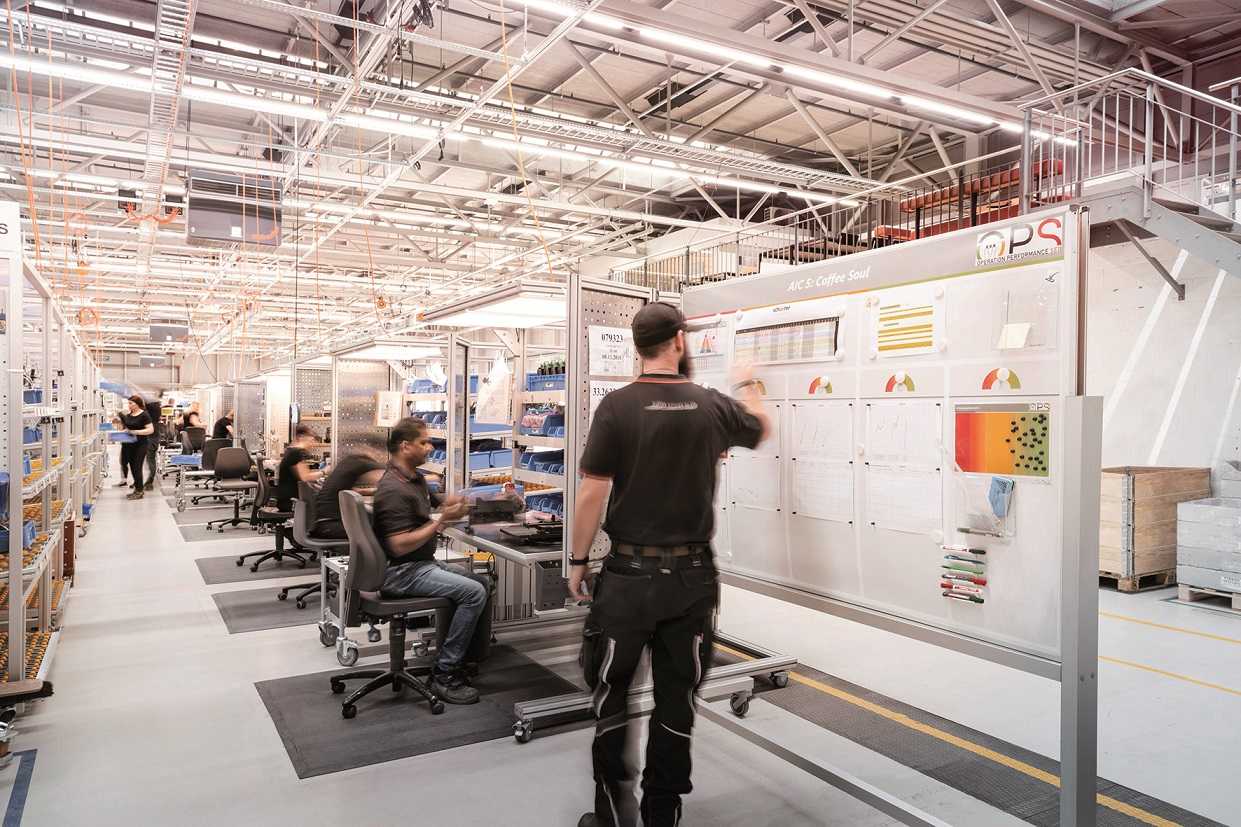ZUCHWIL, Switzerland – Spurred on by the increasing worldwide demand for professional coffee solutions, Schaerer AG is on an unstoppable expansion course. In addition to the traditional sales markets in Switzerland and Europe, the Swiss-made coffee machine technology and the extensive coffee expertise of the Swiss company are in particular demand in the US and Asia – the regions which are driving the growth.
In 2018, large orders of well-known chains resulted in a double-digit order increase in comparison to the previous year“We will continue this success story in 2019 and far exceed the sales figures of the last years thanks to the excellent order situation”, says Jörg Schwartze, CEO of Schaerer.
For fast delivery of the global markets from Zuchwil, Schaerer has created the basis with an extensive multi-level expansion of the production facilities: In the first step, this meant that it was possible to manufacture 25 percent more machines.
With the completion of the current large project for sustainable production expansion, in the future more than double the number of machines – meaning 100 percent more machines than in 2018 – can leave the factory in Zuchwil.
But the production concept of Schaerer AG means so much more: In addition to the future-proof production, a higher level of quality assurance, flexibility for the execution of customised solutions as well as an improved working environment for the employees are the focus. Improved integration of the suppliers is also an important basis for increased flexibility.
From 30 to 100 coffee machines per day on the line
Many measures have been taken to increase production capacity and make production as flexible and easily scalable as possible. For respective orders, the production process is now based on an 11-step system with continuous flow processes to make cycling and material flow more efficient. This work process makes it possible for the individual employees to produce a much higher number of machines per day.
An example: In order to handle a large US order of Schaerer Coffee Art Plus coffee machines with similar configurations in the lower five digit range in 2019, an assembly line was created which contained all process steps from the frame to packaging.
“On the new line, we can therefore produce more than 100 machines per workday. It used to be 30 or 35”, Schwartze explains of the increased performance. The measures also have many advantages for quality management (QM). During the reorganisation, quality assurance in the lines was supported by defined quality experts in the respective production lines.
The consequences are higher transparency and clear and stable processes which enable error detection and targeted as well as quick handling. In addition, each machine is put into operation and tested on-site, which is a matter for course for the high quality standard of Schaerer.
More efficient customised production at Schaerer
With the motto “Professionalisation of flexibility”, Schaerer is dedicated to offering the customer the most individualised solutions possible while still producing at a high level of quality and performance. Optimisations also take effect here. When it comes to both flexibility with quantities and customised adaptation, it is a decisive advantage that the production processes are easily scalable and transparent at all times.
Schwartze says: “We aspire to not only support our customers with our coffee expertise and technology, but also to offer them ‘the’ solution for their respective business model. Individualisation and holistic concepts are therefore gaining in importance. Thanks to the new system, we can react even quicker and, above all, produce greater individualised quantities in a more efficient manner.”
Valuable input from the employees
The employees were involved from the very beginning. They gave suggestions and ideas based on their previous experiences in the relevant production areas in different workshops. For example, an assembly line grew out of this process, in which 42 workstations work in sync – directly in time or connected by a Kanban cycle.
The involvement of staff did not end with the implementation of assembly lines, however. In brief daily meetings, short-term goals and challenges were discussed and tackled. “The aim was to reconcile the required increase in productivity with improved working conditions when it comes to ergonomics and safety and thereby to achieve a “win-win” situation for both sides”, explains Schwartze.


















